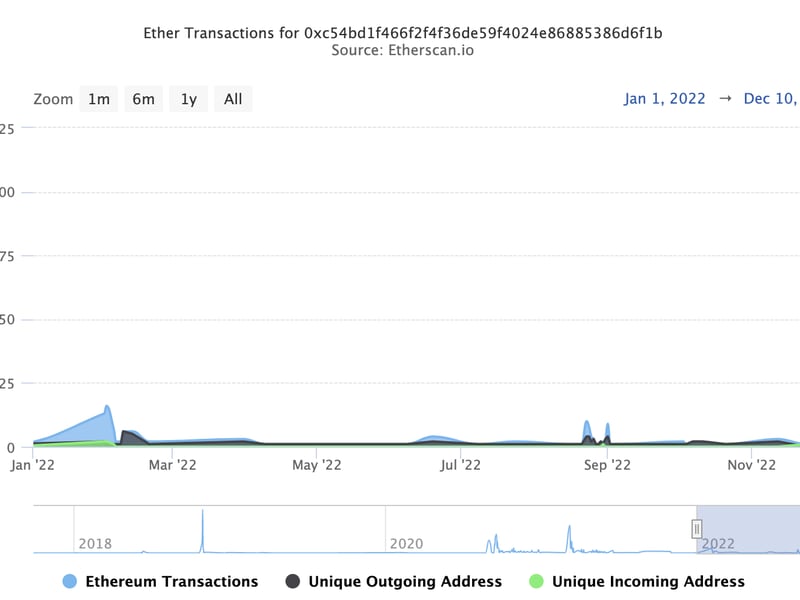Chainlink Whale ‘Oldwhite’ Used More Than 150 Wallets to Avoid Staking Limits

Chainlink’s new “staking” program – where participants can earn crypto rewards for helping to secure the network – was intended to be broad-based: The price-feed provider imposed a limit of 7,000 LINK tokens per wallet to “promote greater inclusion and reduce the risk of a few participants dominating the pool in the early stages,” according to the project team.
But blockchain data reveals how one large holder – a “whale,” in crypto parlance – was able to get around the limits by creating more than 150 addresses – and then staking the full 7,000 LINK allotment from each of them.
The elaborate effort allowed the whale, nicknamed “Oldwhite” by the OpenSea platform, to stake some 1.06 million LINK ($7 million worth).
Chainlink officials have claimed success in drawing broad participation in their new program, arguing that more than 3,300 “unique Community stakers staked a median amount of about 2,100 LINK.” Overall, about 7,800 addresses staked some amount of LINK tokens.
But the individual whale’s ability to shepherd resources and blockchain savvy to garner nearly 5% of the staking program’s overall community allotment of 22.5 million LINK tokens shows just how difficult or impossible it can be to police participants intent on gaming the system.
“There is no perfect solution to 100% prevent whales from staking without trade-offs,” Chainlink Community Ambassador ChainLinkGod.eth acknowledged in a Dec. 8 tweet.
How Oldwhite pulled it off
On the Ethereum blockchain explorer Etherscan, the whale is labeled as 0xC54.
In the days before Chainlink opened an early-access period for qualified participants, the whale started getting their LINK tokens into position.
From Dec. 3 through Dec. 7, the 1.06 million LINK tokens were withdrawn from decentralized lender Aave in three transactions (Tx1, Tx2 and Tx3) and transferred to the Oldwhite wallet.
Then, Oldwhite sent 7,000 LINK each to more than 150 unique wallet addresses.

Once Chainlink opened up its general-access period for staking, on Dec. 8, each of the 150-plus wallet addresses staked their full allotments of 7,000 LINK tokens.
The rapid subscription binge helped to max out the Chainlink staking program’s overall community capacity of 22.5 million LINK in just three hours.
One possible hint at the whale’s motive for transferring the tokens off of Aave and into the Chainlink staking program: extra interest payments. Aave’s Ethereum Market is currently paying an annual yield of 0.27% on supplied LINK tokens, whereas Chainlink’s LINK staking pays out rewards at a rate of 4.75%.
Requests for comment sent by CoinDesk to the 0xC54 wallet via a Blockscan chat weren’t returned before press time.
Based on the reaction from Chainlink officials, there may not be much to do about Oldwhite’s activities at this point.
Chris Barrett, Chainlink’s head of public relations, told CoinDesk that the program’s design “provided ample additional opportunity for a diverse group of Community Stakers to participate.”
Including one very wave-making whale.









